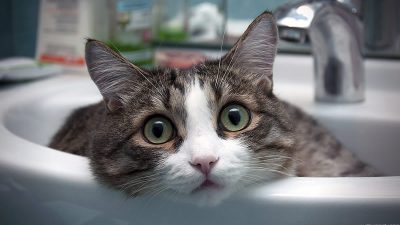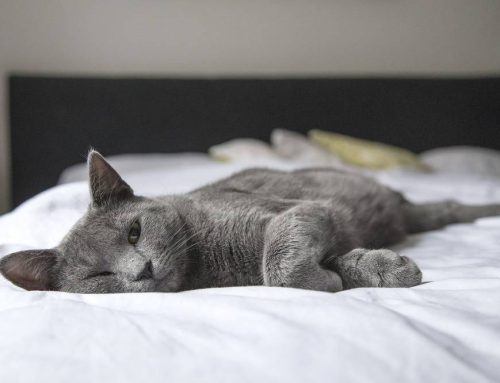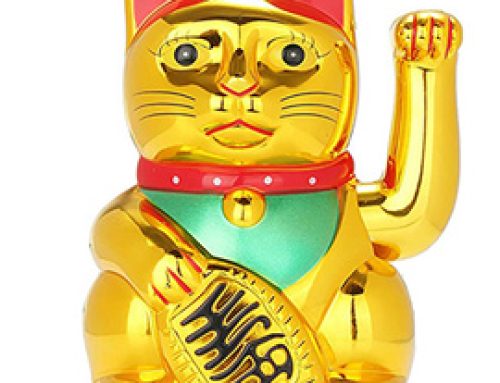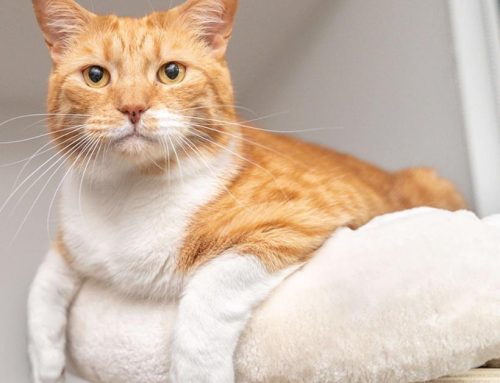 Climate Change is affecting even our feline friends! Much as they love a warm spot, the humidity, dust and pollen have resulted in a lot of cats getting very sticky, dirty coats.
Climate Change is affecting even our feline friends! Much as they love a warm spot, the humidity, dust and pollen have resulted in a lot of cats getting very sticky, dirty coats.
Cats only have little tongues to clean themselves with, resulting in sore mouths and sneezing when they try to clean themselves, so a lot of them will need some help from you. Nowhere is hermetically sealed, so even indoor cats are exposed to the outside pollutants and aerosol debris. Plus the EPA even reckons that the stuff indoors is worse than outdoors, and the resurgence of plants with sticky pollen flowering at different times that are going to cause the next wave of sore
mouths. The answer is – Bathe your cat – REALLY. This is the Actual Way to Bath a cat. Dr Kim has had to do several hundred ‘emergency bathings’ every summer when a cat’s coat gets that ’sticky’ look or feels ‘crispy’.
In an emergency, if you do not have or cannot get some proper cat shampoo like Aloveen or Dermcare Natural Shampoo (remember cat skin is different), then Baby Shampoo, Morning Fresh Detergent or Sunlight Soap (all Unscented and especially not lemon scented) will do. Unlike proper cat shampoos, those will take the oil out of the cat’s fur and make them take much longer to dry, but otherwise the cats will be fie.
There are 3 secrets
Use VERY WARM (ie Hand Hot) water. Dr Kim and the Feline Fabulous Groomers can wash a cat in cold water but you’ve got to be strong and quick to get away with it!.
DO NOT RAIN on the cat – use a jug of water to dampen the coat, or hold the shower spray CLOSE to their bodies, especially when rinsing. You can ‘dunk’ a cat in a bucket of water if you lower it in back feet fist but it is harder to wash and rinse them.
DO NOT LET the water come over their feet – leave the plug out of the sink and put a rubber mat or towel in the basin for less slip.
The Method
Wash with 2 people the fist time one to push the cat firmly DOWN on the shoulders (scruff) and bum (if they get up and onto their back legs, you’ve lost them). Wash in 2 goes – the fist to dampen the coat to get through the ‘glue’ or the water repellent natural coat oils. It is helpful to have a little bit of shampoo in the jug to start. The second wash is to get the shampoo right down to the skin and remove the irritants – you do not need much shampoo on a cat to get a good foam and clean. This is a very useful technique if owners are allergic to their cat as well – the feline allergen is actually water soluble and rinses away. Really itchy cats will go and sit in the bath by themselves after a few washes – they learn it feels good. Last step is to rinse well. You really only need a fairly rough towel dry – even if the day is a bit cool. If the cat is healthy, once it starts licking itself, their coat dries like magic (what is IN cat spit?). Wiping the cat’s coat with a warm damp cloth daily works as maintenance between washes. In ‘sticky weather’ a wash every 4 – 6 weeks is probably OK. And remember – cats rub their faces on everything to say ‘mine mine mine’, so that area is very prone to connecting with irritants.
If your cat is not eating, or is showing signs of baldness or other irritation, then obviously they need to come and see Dr Kim. Otherwise – Good Luck with REALLY BATHING A CAT. The obvious other alternative is: Book your cat in for a Professional Groom – PHONE The Cat Palace on 9417 6613 NOW. Kitty Day Spa
may be just what your cat needs to FEEL GREAT this summer!







